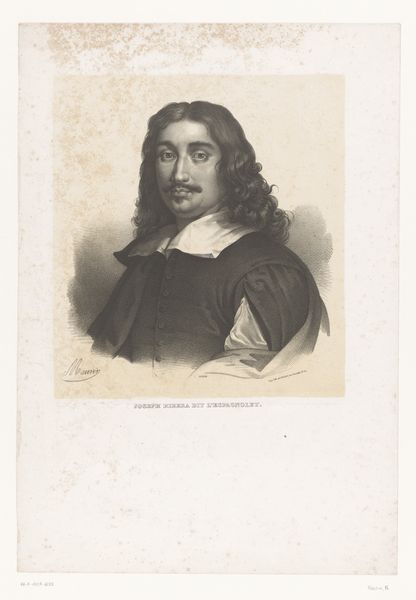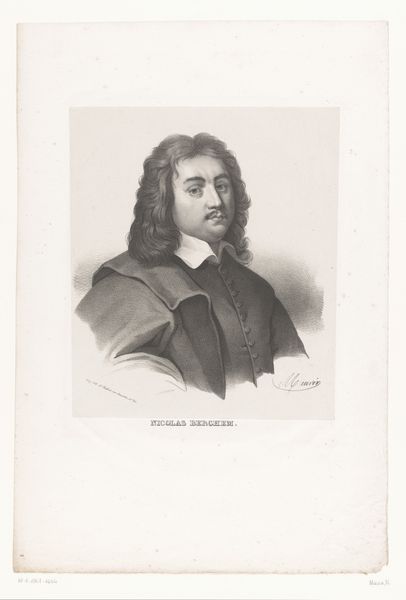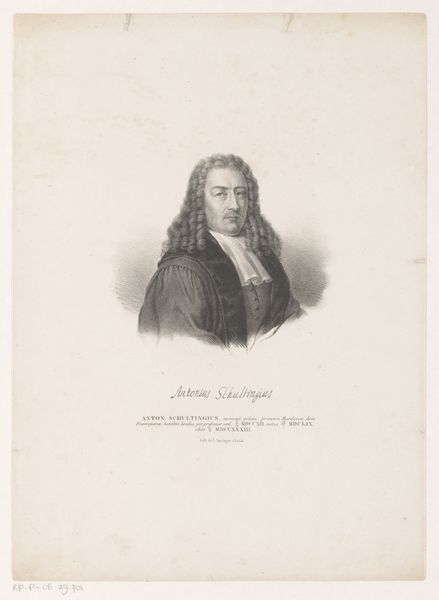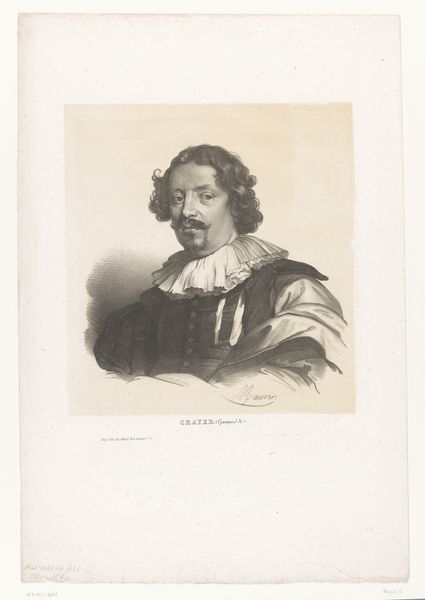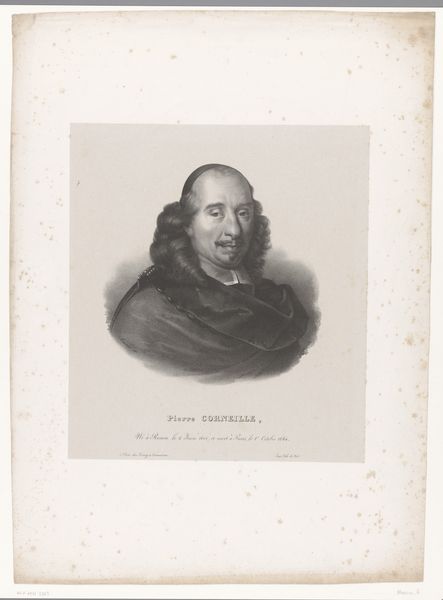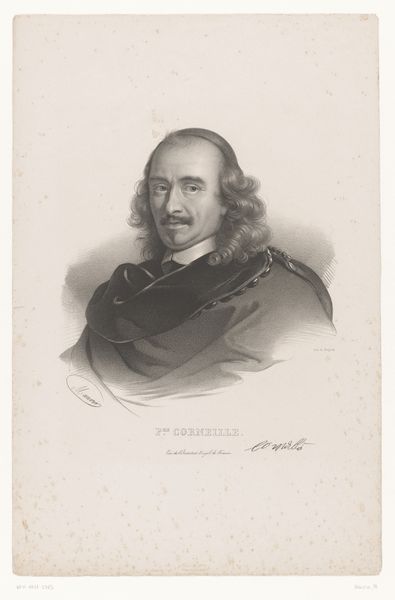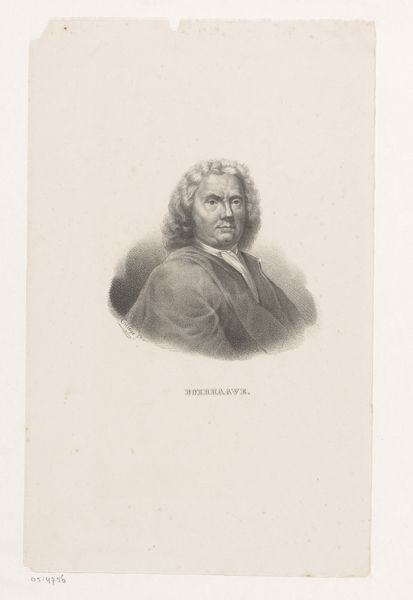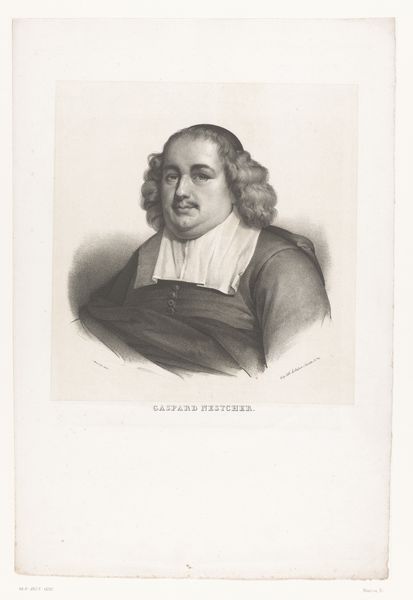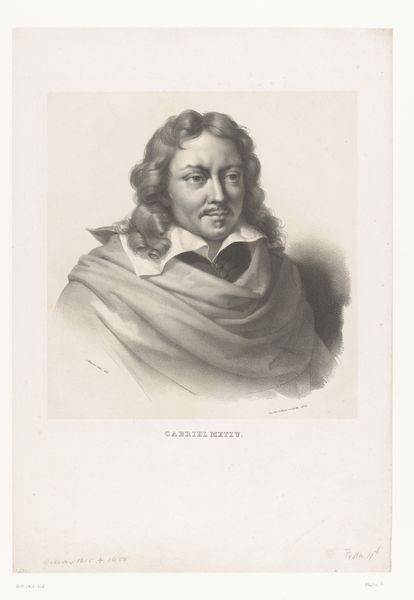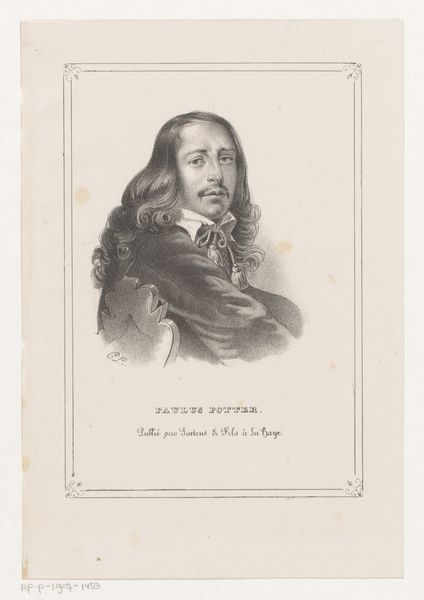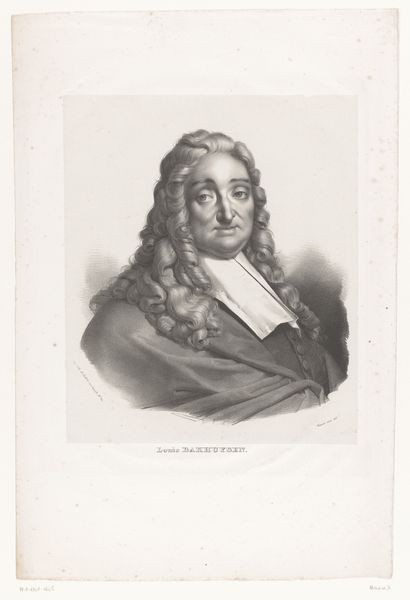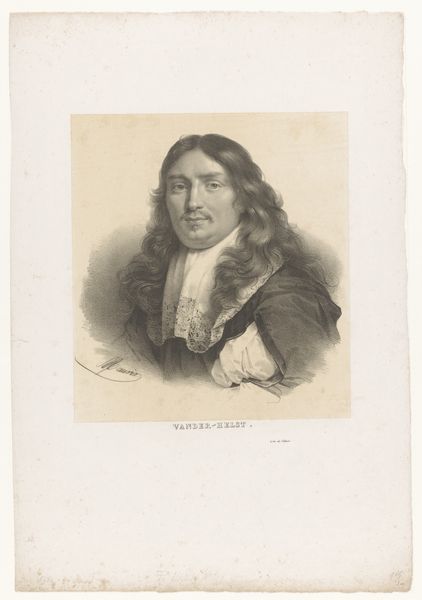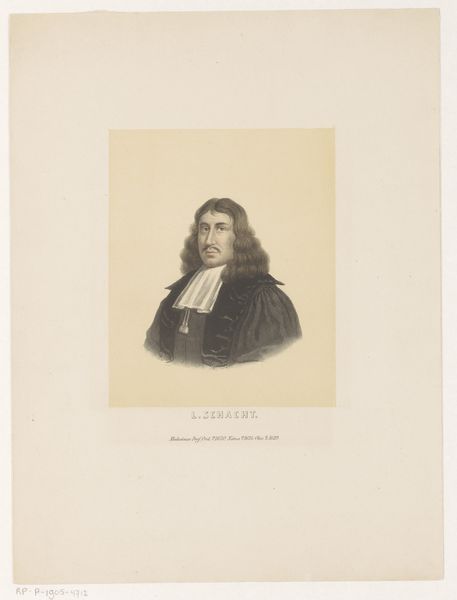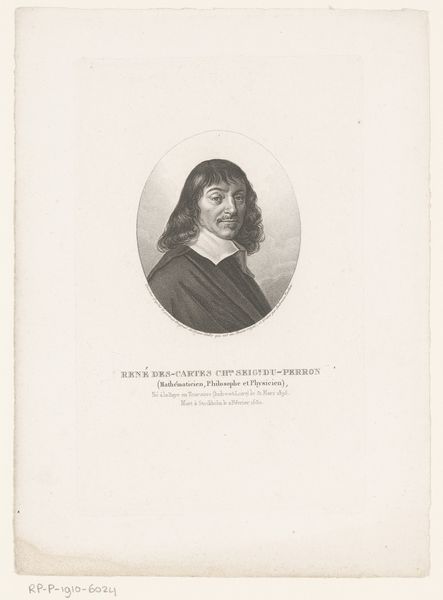
drawing, print, pencil
#
portrait
#
drawing
#
neoclacissism
# print
#
pencil sketch
#
pencil drawing
#
pencil
#
portrait drawing
Dimensions: height 495 mm, width 333 mm
Copyright: Rijks Museum: Open Domain
Antoine Maurin made this print, portraying painter Gerard ter Borch, sometime in the first half of the 19th century. It offers a fascinating glimpse into the art world of 19th-century Europe and its relationship with its artistic past. The print is not simply a reproduction, but an interpretation. Maurin, working in France, was deeply engaged with the legacy of the Dutch Golden Age. The choice of ter Borch, known for his refined genre scenes and portraits of the Dutch elite, speaks to a broader interest in the social and cultural values of the Dutch Republic. By reviving the images of past masters, artists and institutions in 19th century France were actively shaping the narrative of European art history, defining the canon and establishing a sense of national identity. To truly understand this print, one would need to delve into the history of printmaking, the rise of art academies, and the development of art collecting in 19th-century Europe. Only then can we appreciate the complex interplay between artistic creation, institutional power, and social values.
Comments
No comments
Be the first to comment and join the conversation on the ultimate creative platform.
